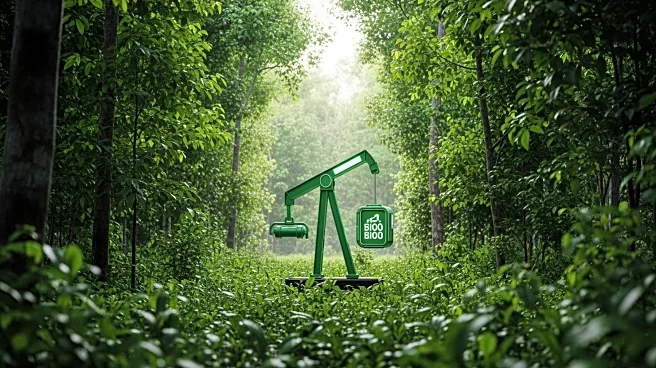What's Happening?
A recent study has explored the use of climate metrics to assess the impact of climate change on pilgrimages in Ethiopia. The research combined climate and heritage science to evaluate eight climate metrics,
including minimum and maximum temperatures, rain days, wind chill, and heat index. These metrics were assessed for their sensitivity to the time period studied and their ability to be captured by observed and modelled datasets. The study found that five of these metrics could be effectively captured by global climate models (GCMs), specifically the CMIP6 ensemble, which are useful for understanding climate conditions during pilgrimages in the Bega season. The research highlights the importance of using region-specific seasons rather than generic time periods to accurately assess climate impacts on cultural practices.
Why It's Important?
The findings of this study are significant as they provide a framework for policymakers to better understand and mitigate the impacts of climate change on cultural heritage practices, such as pilgrimages. By identifying reliable climate metrics, the study offers tools to assess future climate impacts, which is crucial for planning and adaptation strategies. This research underscores the need for interdisciplinary collaboration between climate scientists and heritage experts to address the challenges posed by climate change. The ability to accurately model climate impacts on cultural practices can inform policy decisions and help protect cultural heritage sites and practices from adverse climate effects.
What's Next?
Future research may focus on improving the spatial resolution of climate models to better simulate metrics that were not effectively captured by current GCMs. High-resolution convection-permitting models could be developed to resolve these metrics more accurately. Additionally, ongoing dialogue and collaboration between climate scientists and heritage experts will be essential to refine climate analysis and ensure that cultural practices are adequately protected against climate change. Policymakers may use these findings to develop targeted interventions that address the specific climate challenges faced by cultural heritage sites and practices.
Beyond the Headlines
The study highlights the broader implications of climate change on cultural heritage, which is often overlooked in climate policy discussions. By quantifying the impact of climate on cultural practices, the research provides a basis for integrating cultural heritage considerations into climate change policy. This approach can lead to more comprehensive and culturally sensitive climate adaptation strategies, ensuring that cultural heritage is preserved for future generations.











